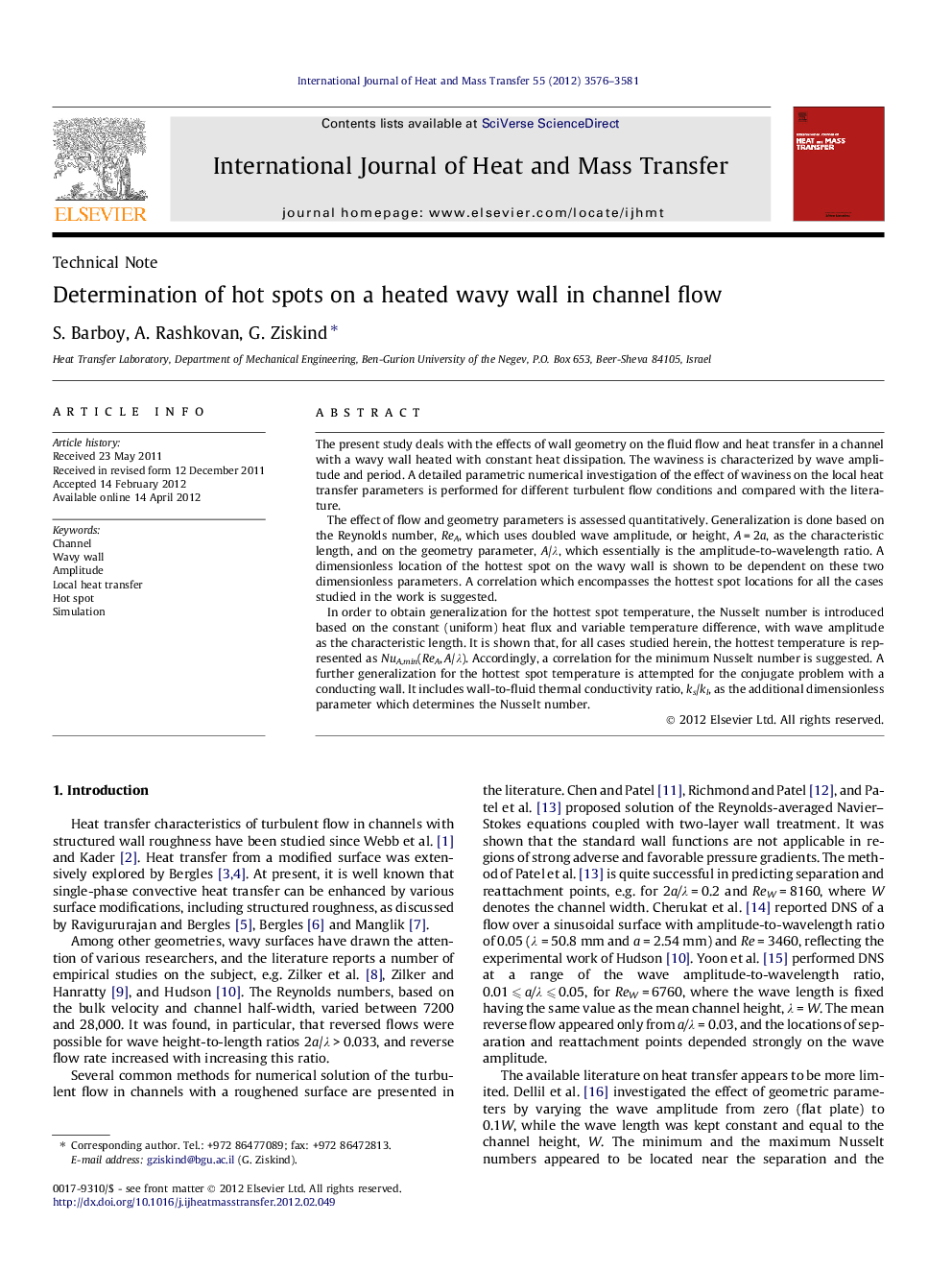| Article ID | Journal | Published Year | Pages | File Type |
|---|---|---|---|---|
| 658384 | International Journal of Heat and Mass Transfer | 2012 | 6 Pages |
The present study deals with the effects of wall geometry on the fluid flow and heat transfer in a channel with a wavy wall heated with constant heat dissipation. The waviness is characterized by wave amplitude and period. A detailed parametric numerical investigation of the effect of waviness on the local heat transfer parameters is performed for different turbulent flow conditions and compared with the literature.The effect of flow and geometry parameters is assessed quantitatively. Generalization is done based on the Reynolds number, ReA, which uses doubled wave amplitude, or height, A = 2a, as the characteristic length, and on the geometry parameter, A/λ, which essentially is the amplitude-to-wavelength ratio. A dimensionless location of the hottest spot on the wavy wall is shown to be dependent on these two dimensionless parameters. A correlation which encompasses the hottest spot locations for all the cases studied in the work is suggested.In order to obtain generalization for the hottest spot temperature, the Nusselt number is introduced based on the constant (uniform) heat flux and variable temperature difference, with wave amplitude as the characteristic length. It is shown that, for all cases studied herein, the hottest temperature is represented as NuA,min(ReA, A/λ). Accordingly, a correlation for the minimum Nusselt number is suggested. A further generalization for the hottest spot temperature is attempted for the conjugate problem with a conducting wall. It includes wall-to-fluid thermal conductivity ratio, ks/kl, as the additional dimensionless parameter which determines the Nusselt number.
